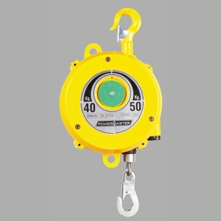In today’s interconnected world, we are reliant on vast amounts of different kinds of cables that run our devices, link our networks and keep our systems running. But taking place behind the scenes is an unheralded workhorse keeping these essential connections running reliably and efficiently: the cable balancer. This impressive device has a vital role to play in the precise balance that modern technology requires and is therefore a necessary element in many different sectors and applications.
1.Understanding the Cable Balancer Fundamentals
A cable balancer is an advanced mechanical tool that is used to regulate and curtail the weight of cables on several joining points. That can be compared to the work of a talented orchestra conductor, who must coordinate the work of each cable so that they work without overwhelming the whole system. The device is used to redistribute the loads so that they will be spread equally, and no single cable will create extra stress that will cause it to fail or stabilize the system.
2.The Science Behind Perfect Cable Distribution
The engineering mechanics of how to balance cables is based on complex load distribution principles and dynamics. These devices employ well-calculated centers of pivot action, counterweights, and tension to attain the best balance in cable systems. A balancer adjusts automatically to achieve equilibrium in different loads carried by cables or different conditions in which the cables are used.
3.Essential Applications Across Modern Industries
Cable balancers have an application in a variety of industries whose cable management is essential. Telecommunications organizations rely on such gadgets to create a stable communication network in their extensive infrastructure networks. The reason is that manufacturing plants install them to provide a uniform power supply to heavy equipment and automated processes.
4.Key Benefits That Make the Difference
The benefits of the application of cable balancers extend much beyond load distribution. These gadgets save a lot of maintenance expenses since they avoid unnecessary wear and tear of the cables, and the cables do not interfere with each other. They improve the reliability of systems by removing single points of failure that can be used to take down an entire network.
5.Selecting the Right Balancer for Your Needs
The proper selection of a cable balancer involves consideration of a number of important variables. The main issue to be taken into consideration is the weight and electrical load capacity, because the device must accommodate the most weight that the cables are expected to attain and also the load that the cables will carry electrically. Space limitations on installation can restrict size choices, and the special access needs that may be paramount with a certain installation can affect mounting and serviceability considerations.
Conclusion
Cable balancers can be more of the behind-the-scenes type, but they are very important to the current operations. These tool spring balancer are critical in ensuring that the world is getting the technology-dependent cable systems we see because they operate reliably, efficiently and safely.

